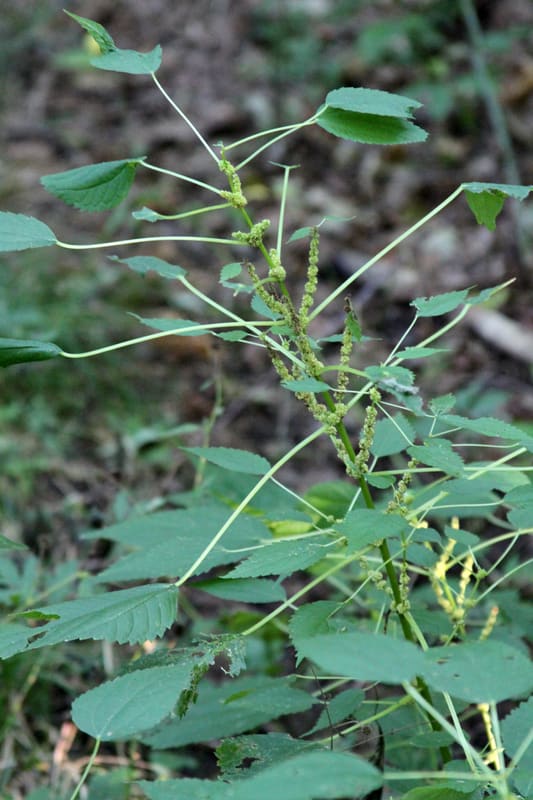False Nettle, Bog Hemp, Smallspike False Nettle, Roundfruited Bog Hemp
Boehmeria cylindrica

🌿 Morphology
🌞 Growing conditions
🌍 Origin and family
🌾 Uses
Warning: Despite the care taken in writing this sheet, it is essential to cross-reference sources before using or consuming any plant. When in doubt, consult a qualified professional
Permaculture uses
Boehmeria cylindrica has limited direct permaculture applications. The fibrous stems can be used for cordage and potentially processed into fiber. It can serve as a habitat for beneficial insects in wetland gardens. It is not typically consumed and medicinal uses are limited.
Permapeople description
False Nettle is a herbaceous perennial plant that grows in moist habitats. It has opposite leaves and inconspicuous flowers.
Botanical description
Boehmeria cylindrica is a herbaceous perennial plant belonging to the Urticaceae (nettle) family. It typically grows to a height of 1 to 3 feet. The leaves are opposite, ovate to lanceolate, with toothed margins. The stems are erect and unbranched. The flowers are small and greenish, borne in axillary spikes. It is native to eastern North America and is commonly found in moist habitats such as swamps, marshes, and stream banks. Fruits are small, dry achenes.
Companion planting
Boehmeria cylindrica naturally grows in wetland environments and associates well with other moisture-loving plants. Avoid planting it near plants that prefer dry conditions. Specific companion planting studies are limited, but it is likely to benefit from the presence of other native wetland species that attract pollinators or beneficial insects.
Propagation methods
Propagation can be achieved through seeds, division of rhizomes, or stem cuttings. Seeds require a period of cold stratification for improved germination. Rhizome division is best performed in early spring or fall. Stem cuttings can be rooted in moist soil or water.
History and traditions
Historically, Native American tribes have used the fibers of Boehmeria cylindrica for making cordage, nets, and clothing. Its use was widespread among tribes inhabiting areas where the plant was abundant. Specific ceremonial or medicinal uses are less documented compared to true nettles or other fibrous plants.
Usage calendar
Flowering occurs from summer to fall (June - September). Seed collection is best done in the fall (September - October) when the fruits are mature. Planting and division are ideal in early spring (March-April) or fall (September-October). Pruning is generally not required but can be done to control size or remove dead stems.
